It’s ADHD Awareness Month!
As someone who was only recently diagnosed with ADHD, alongside my existing autism diagnosis, this is more of an intro post to ADHD (in women)!
ADHD is the acronym for ‘attention deficit hyperactivity disorder’, which comes under the ‘umbrella’ of neurodivergence. It’s often confused with autism, but refers to experiencing differences in processing and executive function. The broad differences are:
- Inattentiveness – for example, struggling to focus or sustain attention, difficulty following instructions and finishing things, difficulty organising tasks and activities, forgetfulness, losing things, being easily distracted
- Hyperactiveness – for example, having excess energy to express, impatience, fidgeting and needing to move around a lot, being impulsive, anxiety
- Overall executive function difficulties, for example struggling with time management, and generally keeping organised and prioritising things
In a similar way to autism, ADHD often goes unrecognised in girls, for a number of reasons:
- Stereotypes about ADHD being more common in males and being a ‘childrens’ condition’, which can contibute to more boys being referred, which is known as ‘referral bias’
- Kind of like masking, women often intenalise their symptoms, which often leads to comorbidities lke anxiety, OCD, and eating disorders, which may instead be diagnosed
- Gender role expectations – many of the expectations society places on women can cause difficulties for people with ADHD, leading to shame and low self esteem – this leads to many women hiding away rather than seeking diagnosis or support.
What are some of the differences between ADHD in women and men?
Women with ADHD are more likely to experience:
- Hypersensitivities – ADHD women report more experiences of sensory overload and sensory seeking behaviors, as well as difficulties sleeping – they also report more internal sensory concerns, like headaches and nausea
- Different presentations of impulsivity – ADHD women usually display impulsivity in a more internalised way and are more likely to appear controlling or demanding, develop addictive behaviours like substance misuse, and act on negative feelings, e.g. self harming
- Hormone fluctuations – symptoms of ADHD are also known to vary during ovulation, which can affect how someone with ADHD presents
And what about AuDHD?
This is something I will definitely go into more another time, but ADHD and autism frequently co-occur. There are many similarities, sensory differences, intense focus on specific interests, rejection sensitivity, executive dysfunction, sleep issues and emotional dysregulation.
However, people with ADHD are more likely to sensory seek, and make more impulsive decisions, whereas an autistic person is more likely to crave routine and structure, and experience sensory overwhelm.
If someone is autistic and has ADHD, known as AuDHD, they may experience an internal struggle or conflict between their competing autistic and ADHD traits, and a heightened experience of shared traits.
Research used:
https://www.medicalnewstoday.com/articles/325618
https://attwoodandgarnettevents.com/being-autistic-and-having-adhd-as-a-female/
https://www.additudemag.com/adhd-in-women-misunderstood-symptoms-treatment/
https://www.autistica.org.uk/what-is-autism/adhd-and-autism
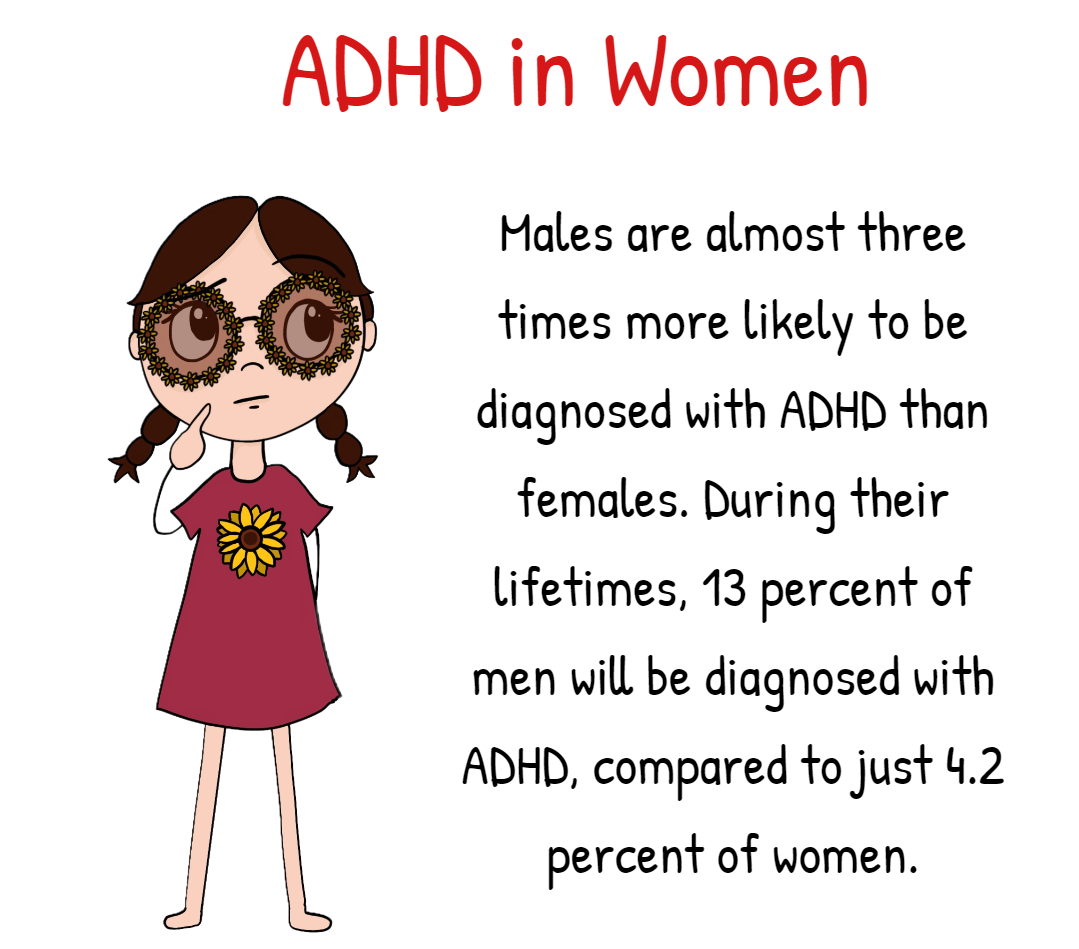
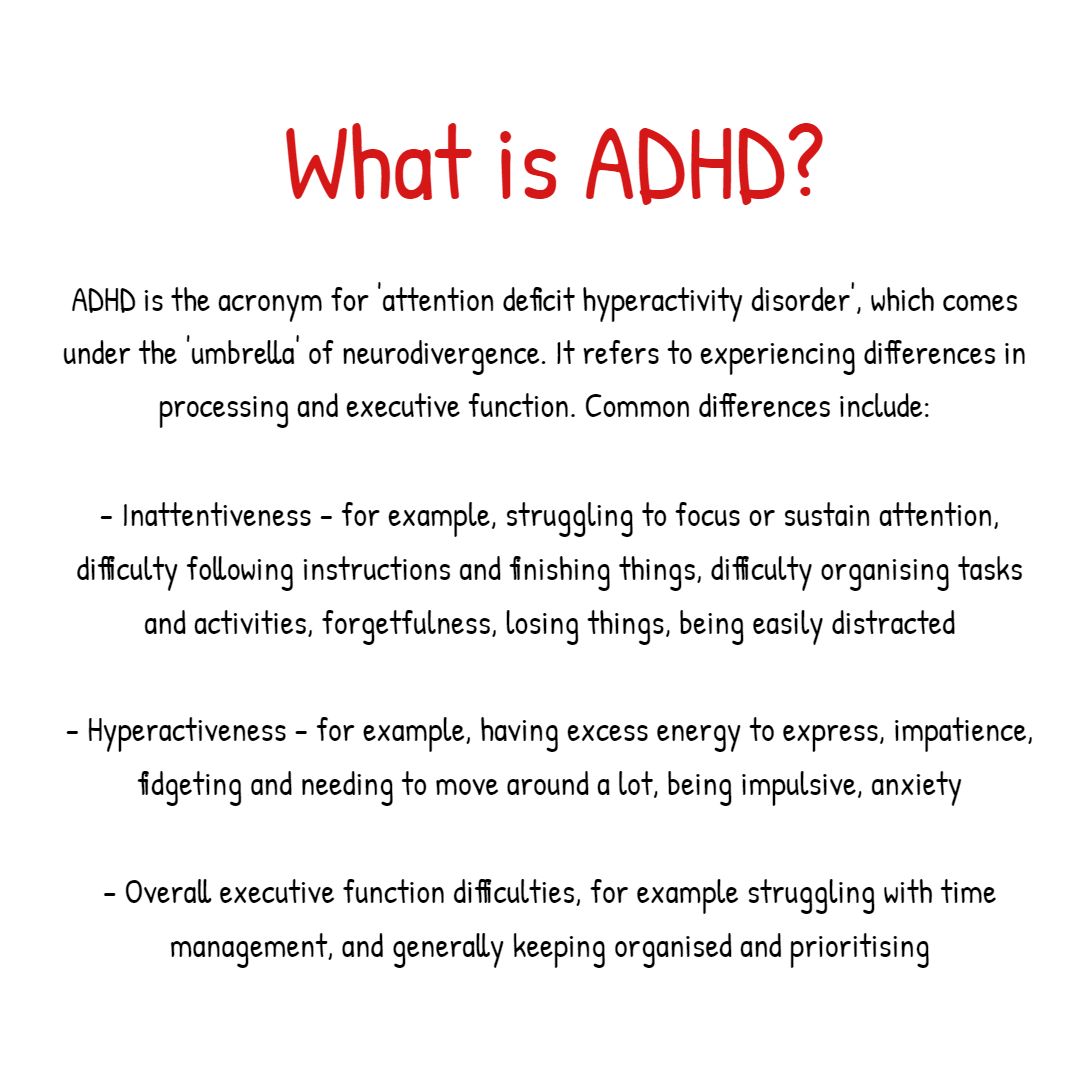
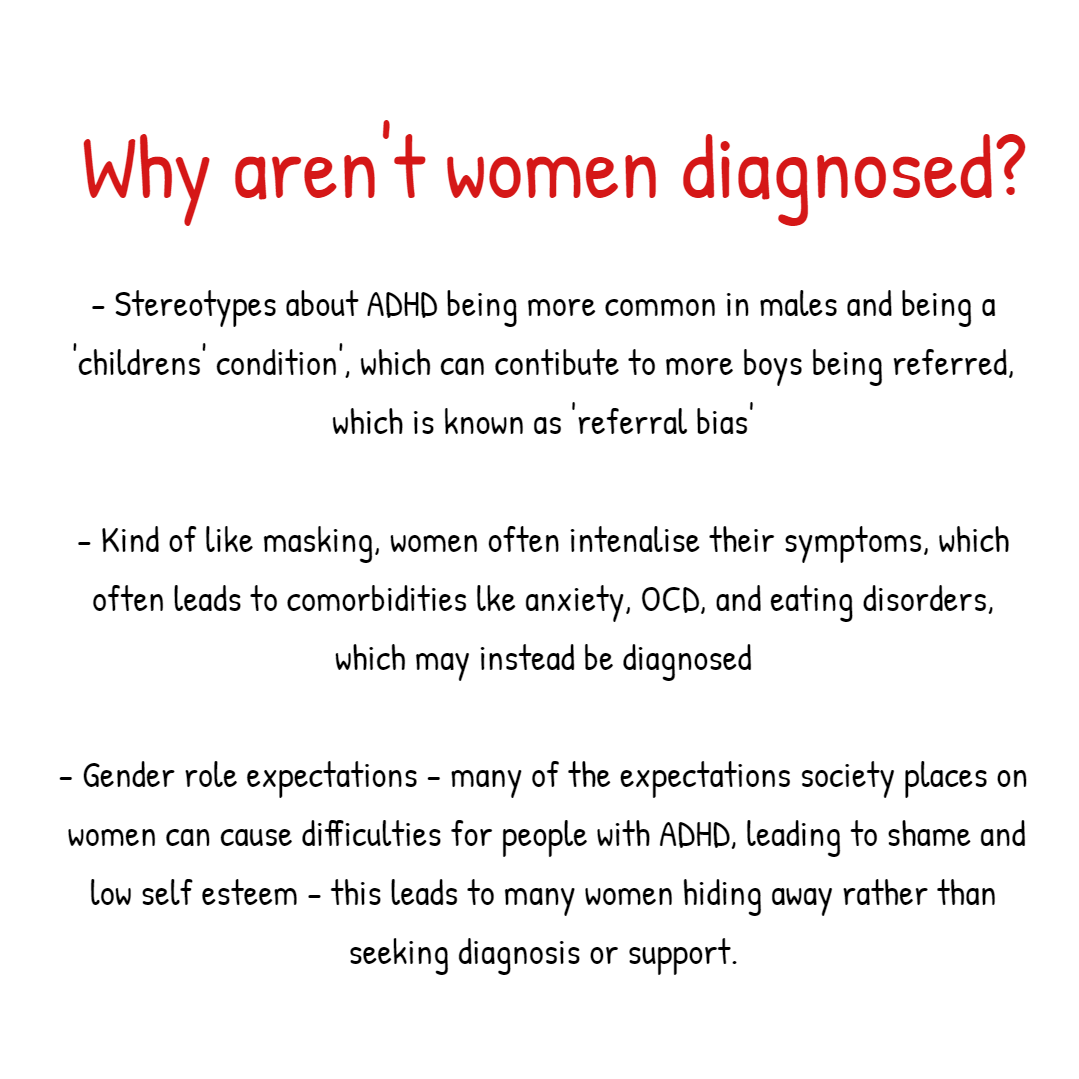
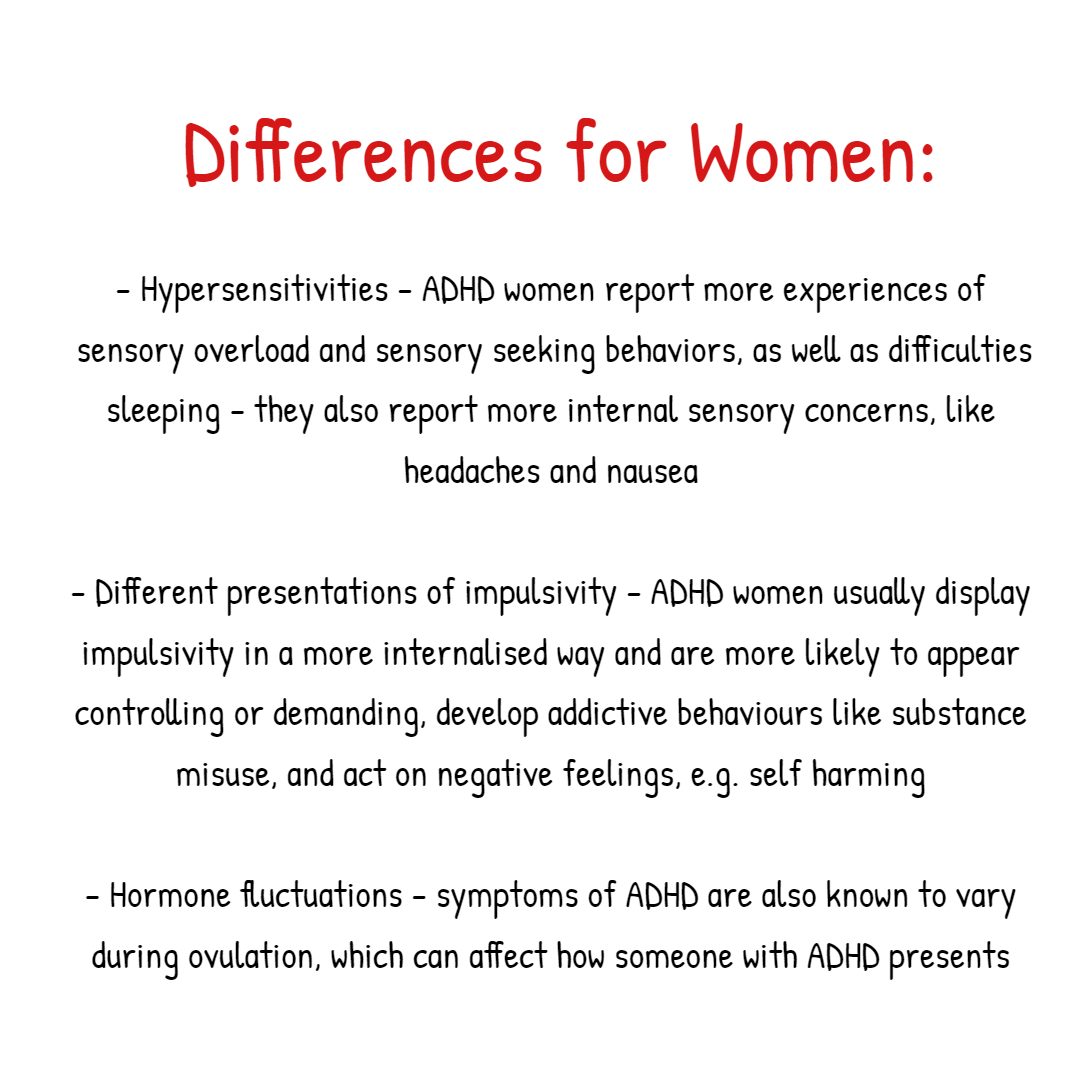
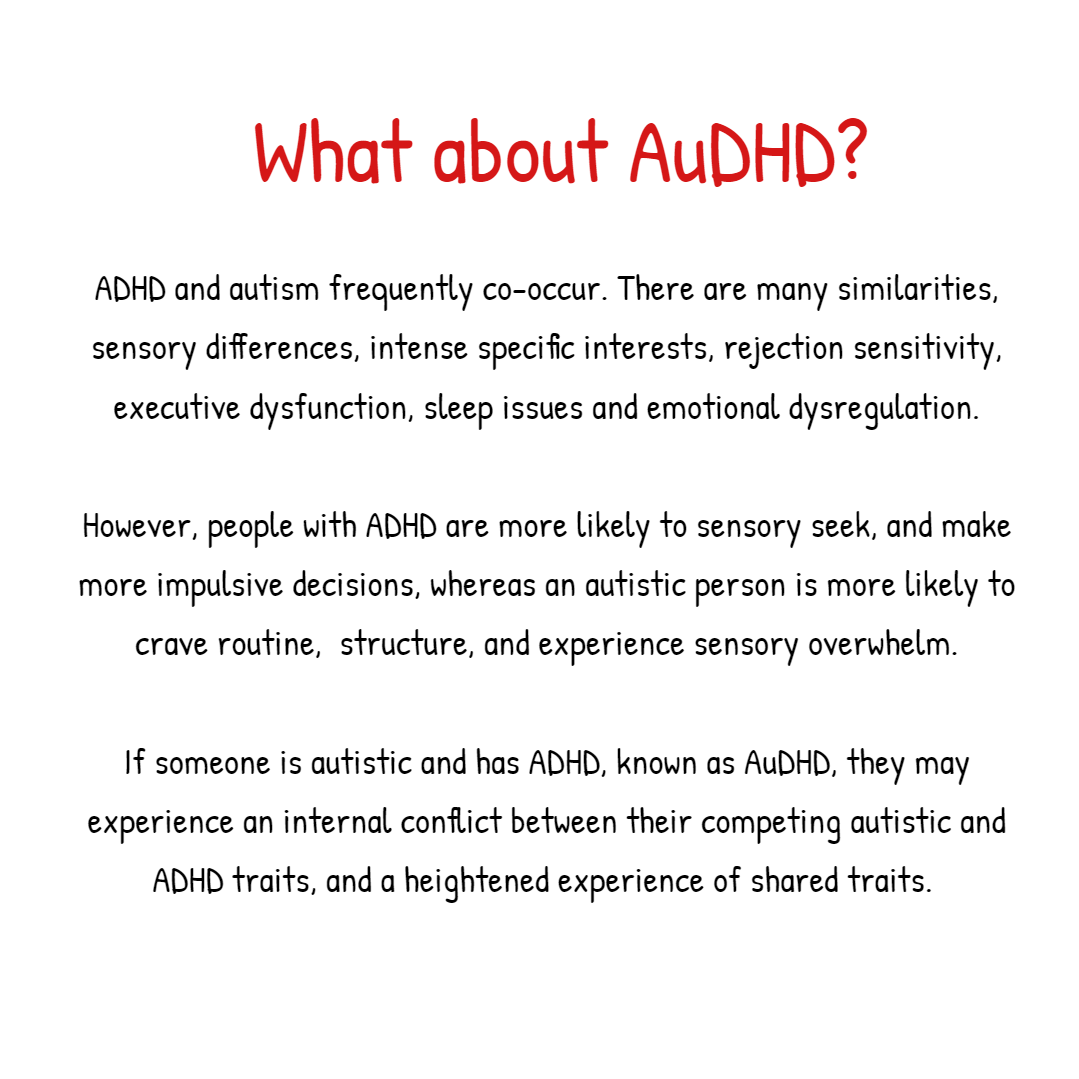
Leave a Reply